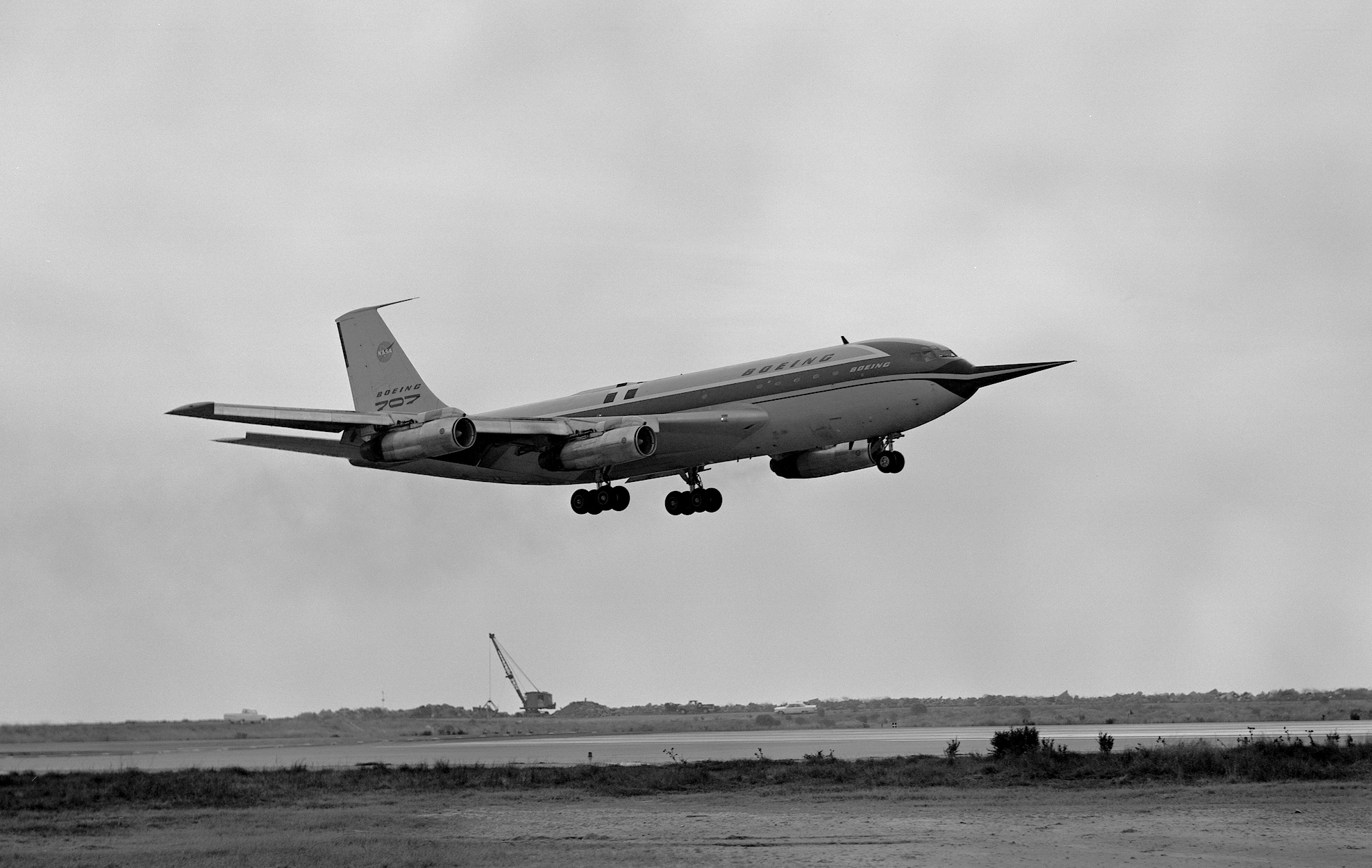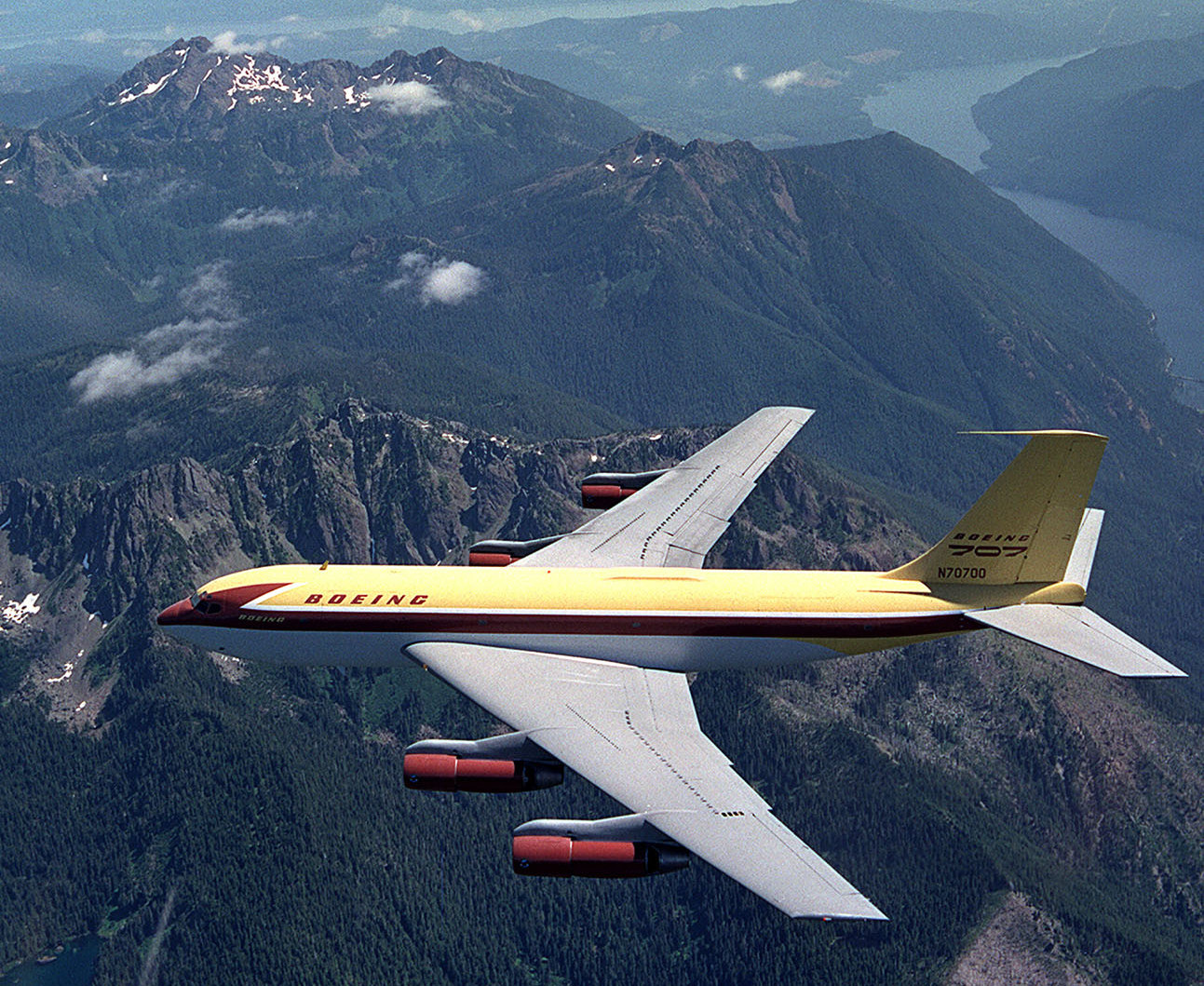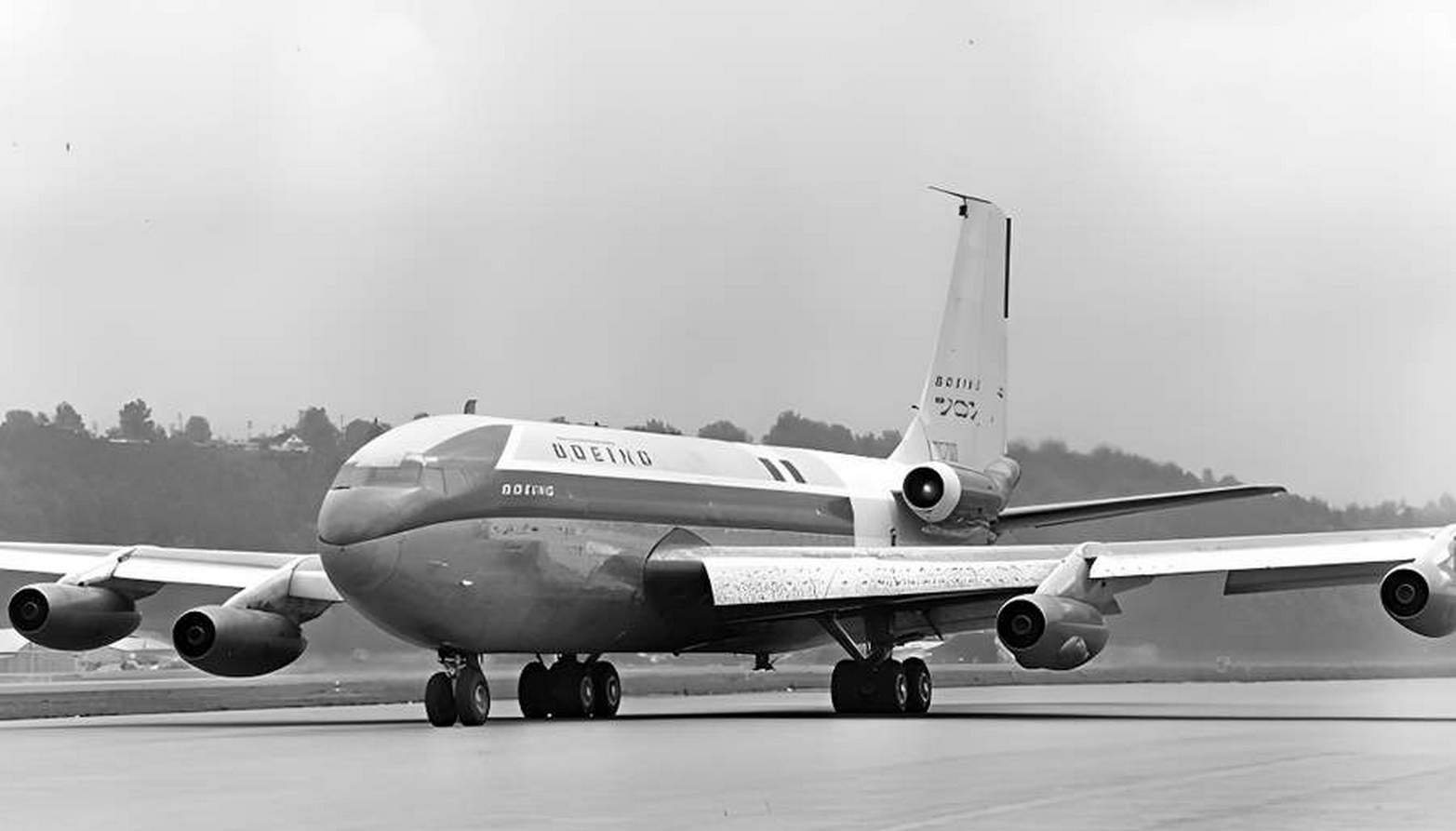70th Anniversary of the Boeing 367-80: Milestones in Jet Aviation History

On July 15, one of the world's first jet transport aircraft, the Boeing 367-80 (Dash 80), celebrated its 70th anniversary. This aircraft is the progenitor of a large family of passenger liners and military machines.
On that day in 1954, it took to the skies for the first time at Renton Airport (USA, Washington State), near one of Boeing's aviation factories. The aircraft was created in an effort to outpace competitor companies Douglas and Lockheed, which dominated the passenger aircraft market with piston engines. Additionally, Boeing executives decided to compete in the Pentagon's announced competition for a jet fuel tanker, in which Lockheed was considered the favorite at the time. The strategy paid off. Over the next few years, the commercially successful Boeing 707 airliner, the KC-135 flying tanker, the C-135 transport aircraft, and a number of special aircraft were developed based on the 367-80 model.
The Boeing 367-80 was equipped with four Pratt & Whitney JT3C turbojet engines, each with a thrust of 4,487 kgf. It had a length of 39 meters, a wingspan of 39.5 meters, a maximum takeoff weight of 86,183 kg, a maximum speed of 937 km/h, and a range of nearly 5,700 km.
This experimental aircraft was initially used for testing programs to create a passenger airliner and a fuel tanker. Several issues were identified, including insufficient longitudinal stability. To address these, the 367-80 underwent modifications. Additionally, the aircraft performed numerous demonstration flights at airshows and special presentations for potential customers.
After completing these tests, the Boeing 367-80 was converted into a flying laboratory. For example, new powerplant variants were tested on it. In 1969, the aircraft was decommissioned and preserved. In total, it made 1,691 flights and spent 2,350 hours in the air. In 1972, Boeing donated the 367-80 to the National Air and Space Museum of the United States. However, the aircraft remained in storage for a long time, then underwent meticulous and lengthy restoration, and was finally displayed on August 27, 2003, at the Steven F. Udvar-Hazy Center at Dulles International Airport (District of Columbia), which is a branch of the National Air and Space Museum.

 Fan-page
Fan-page Youtube
Youtube TikTok
TikTok Aviamuseum
Aviamuseum State Aviation Museum
State Aviation Museum


